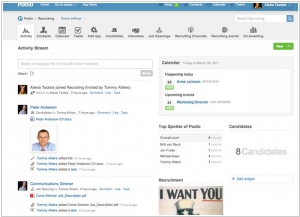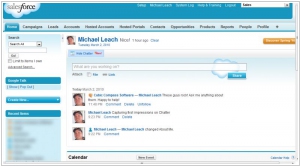Podio vs Salesforce Chatter
May 18, 2023 | Author: Adam Levine
Podio and Salesforce Chatter are both collaboration and communication platforms, but they have different focuses and feature sets. Podio is a flexible work management platform that allows teams to organize, track, and collaborate on projects and tasks. It offers customizable workspaces, project management tools, task tracking, file sharing, and communication features. Podio provides a high level of flexibility and customization, allowing teams to tailor the platform to their specific needs. On the other hand, Salesforce Chatter is a collaboration tool built within the Salesforce ecosystem. It focuses on social collaboration, enabling teams to share updates, collaborate on records, and engage in discussions. Chatter integrates seamlessly with other Salesforce products and provides features like file sharing, feeds, and real-time notifications. It is designed to enhance collaboration and communication within the context of the Salesforce CRM.
See also: Top 10 Enterprise Social Software
See also: Top 10 Enterprise Social Software
Podio vs Salesforce Chatter in our news:
2015. Salesforce adds shopping layer to its Community Cloud
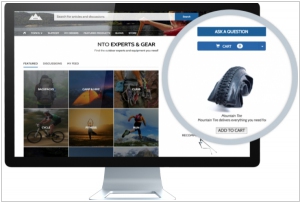
Customers of Salesforce Community Cloud will soon have the ability to incorporate their own purchase buttons. The Community Cloud empowers businesses to construct websites where customers can engage with the company and one another. For instance, Avid Technology, a provider of audio and video production tools, leverages these Community Cloud features to facilitate its Artist Community, enabling users to buy and sell sound effects, stock footage, and other music and video clips among themselves. Early adopters of this platform include Neil Young's PonoMusic and the Deloitte Digital Hub. According to Mike Stone, the senior vice president of marketing for Salesforce Community Cloud, the Customer Cloud can intelligently suggest the appropriate product that is relevant to a given conversation, using insights from the social graph and the evolving community dynamics: "We're effectively utilizing the social graph and our understanding of the community's evolution to provide these recommendations."
2014. Salesforce launches Community Cloud
Salesforce.com has unveiled its fourth cloud offering, known as Salesforce1 Community Cloud, following the successful introduction of Sales, Marketing, and Service Clouds. This new cloud iteration is essentially a revamped version of the Salesforce Communities product, initially launched in June 2013. Unlike Chatter, which primarily focuses on internal networking and collaboration, Community Cloud empowers customers and partners to engage with each other and with company representatives, if needed. It functions as a private LinkedIn of sorts, enabling community members to follow specific topics and individuals and identify areas of expertise. Community Cloud is seamlessly integrated with Service Cloud, enabling the escalation of unanswered or challenging questions, as well as with Sales Cloud, where new community members can be converted into leads. The features announced today are expected to be available in October. Pricing for Salesforce1 Community Cloud starts at $500 per month.
2013. Video: Salesforce announces Customer Revolution
Last week, Salesforce unveiled their latest mobile app, Chatter, which has now become the primary mobile interface for employees, serving as a gateway not only to the social intranet but also to the CRM system. Furthermore, the enhanced mobile version of Chatter has transformed into a more convenient communication and collaboration channel between companies and customers. However, it wouldn't be in Salesforce's style to simply claim that the new app is "more convenient." Instead, they have crafted an entire narrative around a customer revolution that is already underway. According to Salesforce, your customers are mobile-savvy individuals who know how to leverage their phones effectively. They have the power to disrupt your business if they perceive your company as unresponsive to their problems and needs. This chilling video provides further insight. Take a look.
2012. Salesforce Stypi - online notepad for real-time collaboration
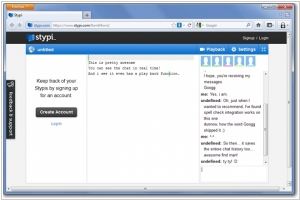
Imagine, that you need to collaborate with your colleagues on a task that requires writing something. For example, to develop project plan or write a commercial proposal. If all meeting participants are present in the office, you just gather them around the table, take a piece of paper or flipchart and write things down. But they are in different places around the world? Of course there are Google Docs, Online Word or Zoho, that could help. But they all require everyone to register and look too complicated for writing down simple lists. (Sometimes such little things prevent people from using online tools). For such online meetings there is a perfect solution - Stypi. It's a simple online notepad with chat, that allows several people to collaborate. ***
2012. Salesforce launched Communities
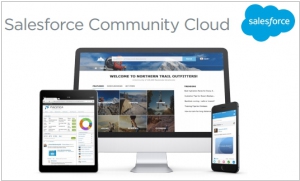
Today, Salesforce has introduced a new service called Salesforce Communities. Currently, it is only available to select Salesforce clients and not accessible to the general public. Although it does not have its own dedicated website yet, it is likely that Marc Benioff is working towards acquiring the community.com domain. Salesforce Communities is designed to facilitate the creation of customer and partner communities. These communities serve several purposes, including providing intelligent customer support by enabling customers to help one another, fostering customer retention and loyalty through community engagement, driving sales by showcasing real customers who can interact with potential customers, and facilitating effective collaboration with partners. The service is built upon the foundation of Chatter and bears a striking resemblance to Facebook in terms of its user interface. The official launch of Salesforce Communities is scheduled for early 2013.
2012. Podio - Social intranet + App buider + App store
Podio - is yet another service to create enterprise social network (like Yammer, Chatter, SocialCast, etc). May be even the definition "yet another" - is not quite correct in this case, because Podio is already one of the most successful representatives of this class. Two months ago Podio was acquired by Citrix, which competes with Microsoft, Google and Salesforce for the enterprise collaboration market. And among Podio's customers are such companies as Alcatel-Lucent, BMW, BBC, Twitter and SubWay. Podio is popular in many countries and available in 10 languages: Russian, Chinese, Brazilian Portuguese, Spanish, German, French, Italian, Danish and English. So how is Podio different from its strong competitors? ***
2012. Citrix acquires cloud-based social business collaboration platform Podio
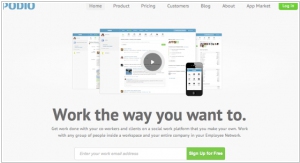
Citrix has completed the acquisition of Podio, a Danish social business collaboration platform. Podio serves as a social network for businesses, empowering its users to create apps that enhance the functionality of the service. It can be likened to "Yammer with apps." Podio provides an App store, where users can incorporate App bundles designed for specific workflow purposes, such as CRM Management tools, Project Management tools, or individual Apps like Candidates (an app for managing job candidates), Twitter (an app for monitoring tweets), and Bugs (an app for internal bug reporting). With Podio, you can handle a wide range of tasks, from expense reports to hiring processes. Instead of following other users, the focus is on following "Spaces" where these activities take place. On the right-hand side, you can access Frequently Used Spaces, Contacts, and Calendar, while the left-hand side displays an activity stream showcasing all actions. This interface provides convenient access to all features, including the ability to add or create your own app tailored to specific tasks.
2011. Benioff: goodbye Cloud, hello Social
On Friday nobody wants to read long news. Good video is much better. This is the video that was shown at the opening of the Dreamforce 2011 conference - probably the most glamorous event in the IT-industry. This video marks the focus change of Marc Benioff and his Salesforce. Last eight years the Dreamforce conference started and ended with the word Cloud. Now it changed. Moreover, one of the main news of this year conference was the opportunity for Salesforce customers to store part of their data on a local server, not in the Cloud. And the new main focus for Salesforce is Social Enterprise. Benioff is comparing modern companies with the Arab countries falling under revolutions: "Either CEOs will make their companies social, or customers and employees will depose them like Muammar Gaddafi". So what should a company do to become social? ***
2011. New Saleseforce Chatter: extranet groups, real-time chat, screen-sharing, HTML5
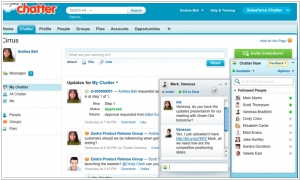
Your company still don't use the (free) Chatter? Then Salesforce is coming to you. Today, the company has introduced the new version of this social collaboration tool. The new Chatter absorbed the functionality of the web-conferencing tool DimDim, that Salesforce acquired earlier this year. Now Chatter allows to see the online status of other users, communicate with them in real-time chat and even start screen-sharing sessions. The chat and screen-sharing support the group mode. In addition, Chatter now allows you to collaborate not only internally but also with external users. Now you can create an private group and invite your customers and partners to it. ***
2011. Yammer reminded Benioff, where the Chatter came from

In recent days, the attention surrounding Salesforce Chatter has overshadowed all other news in the realm of Enterprise 2.0. Naturally, the developers behind Chatter's primary competitor, Yammer, seized the opportunity to garner their share of public attention and remind the head of Salesforce about the origins of this phenomenon. It all began three years ago when Yammer's team introduced the world to the pioneering concept of an enterprise microblogging tool during the Techcrunch50 startup contest. During that event, Marc Benioff, who now leads Salesforce, was one of the judges and expressed his enthusiasm for this innovative service. Fast forward three years, and Salesforce has now unveiled Chatter.com, which bears a striking resemblance to Yammer. However, the Yammer developers assert that over the course of those three years, they were diligently adding new features and building a far more advanced functionality and market presence. Undoubtedly, Yammer has made remarkable progress. Nevertheless, competing with the free offering of Chatter poses a significant challenge for them moving forward.

